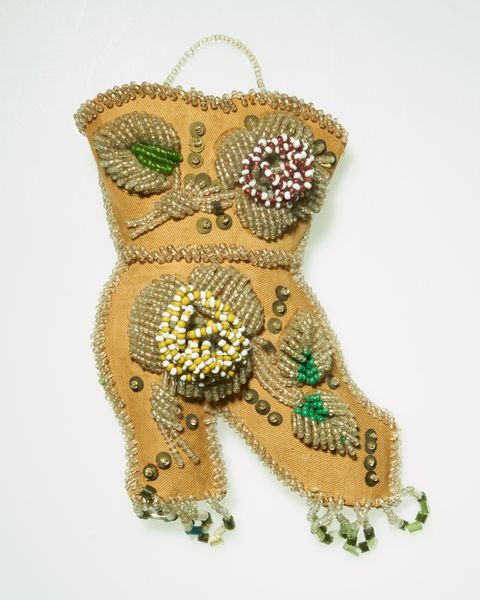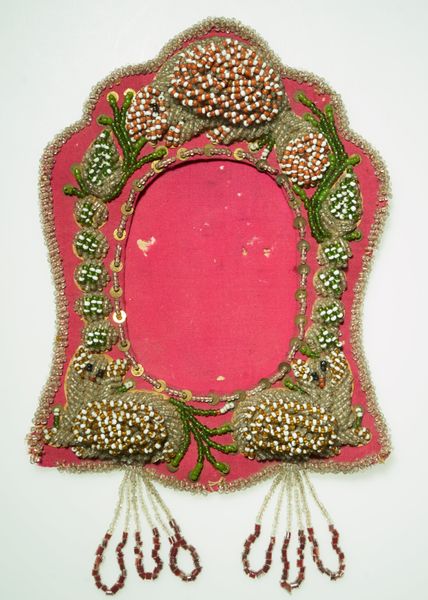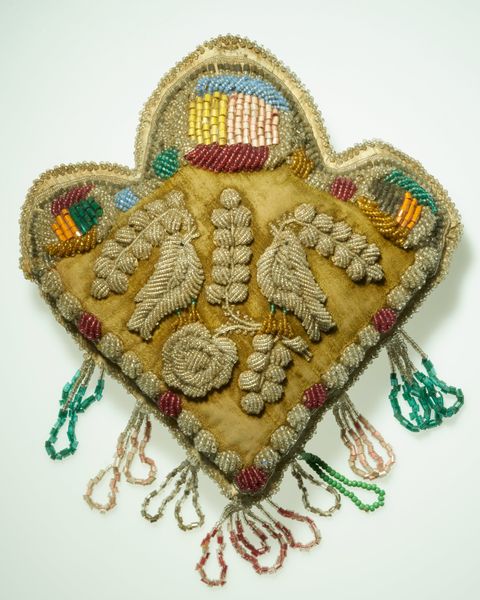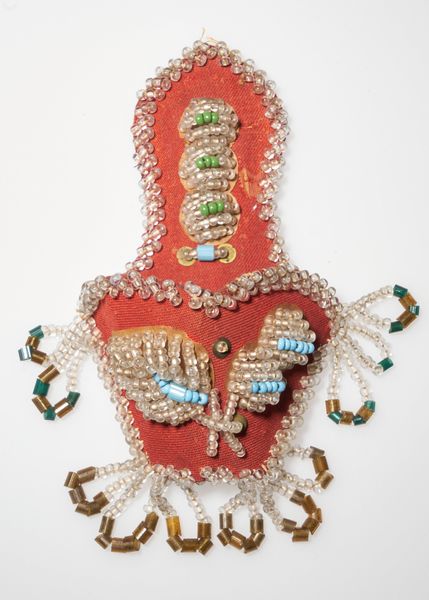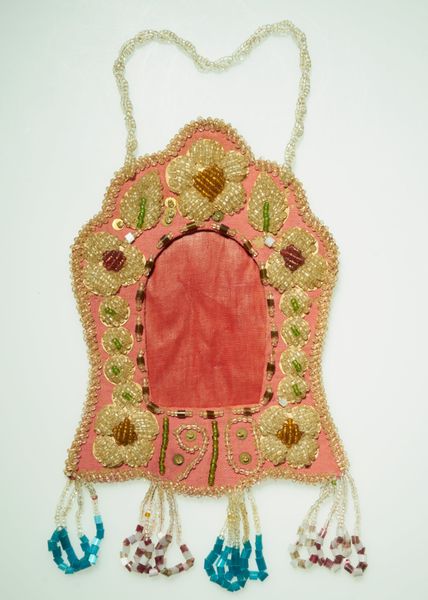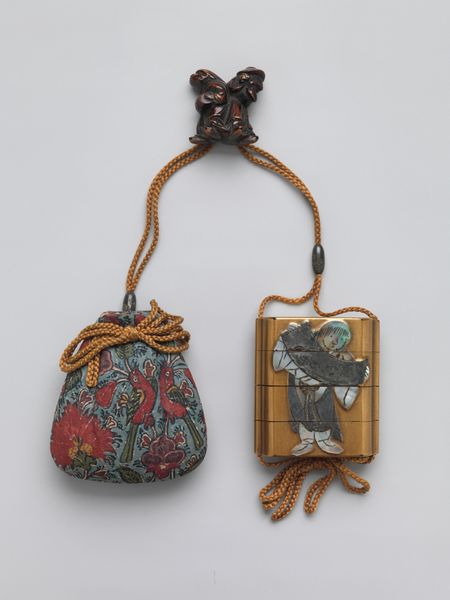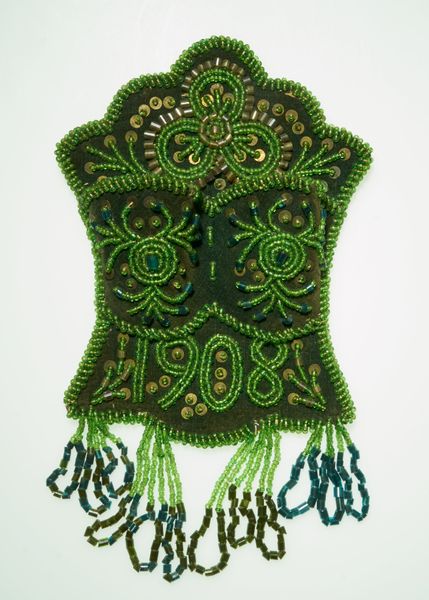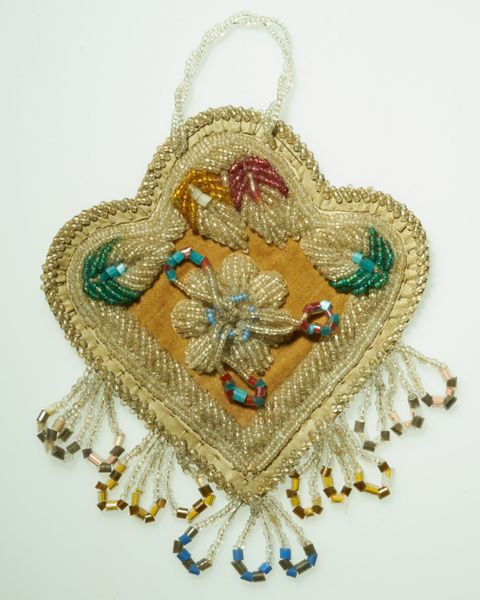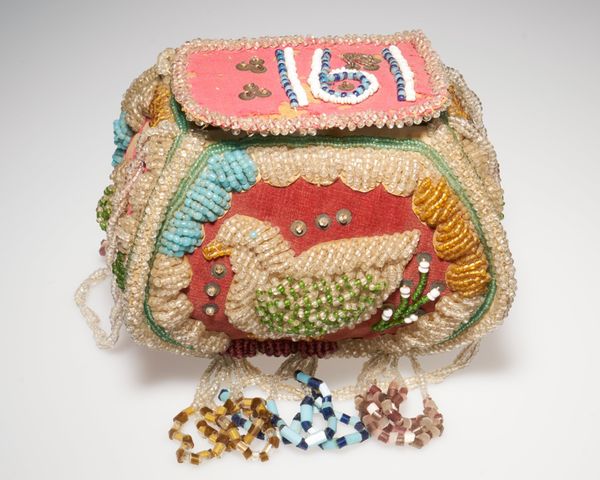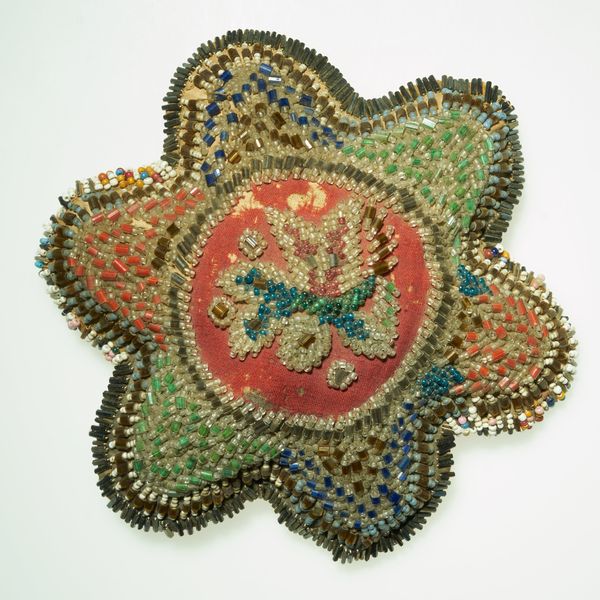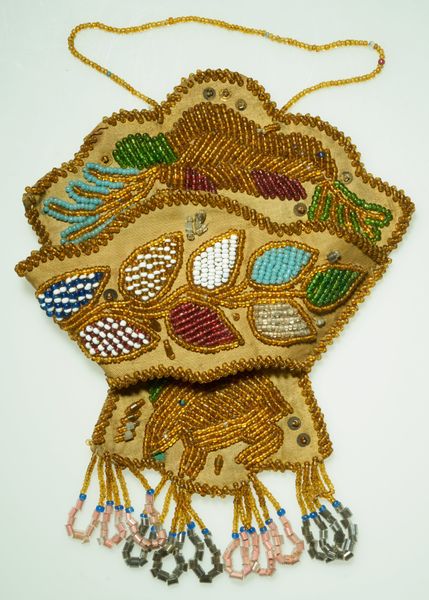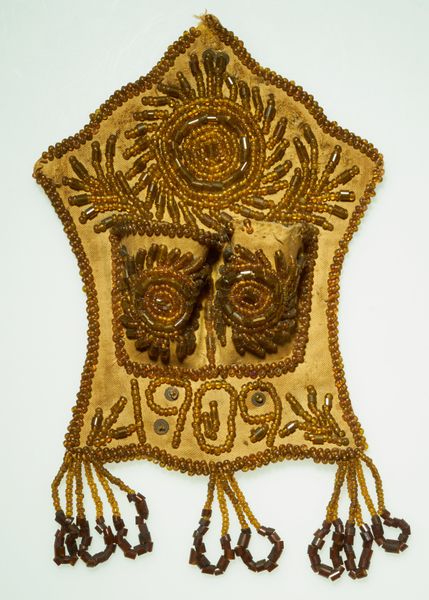
fibre-art, textile
#
fibre-art
#
textile
#
decorative-art
#
indigenous-americas
Dimensions: 6 1/8 x 5 x 1 7/8 in. (15.56 x 12.7 x 4.76 cm)
Copyright: Public Domain
Curator: Let's discuss this Haudenosaunee, or Iroquois, container piece from approximately the 20th century, currently residing at the Minneapolis Institute of Art. Editor: My first impression? It’s dazzling. The contrasting colors and beadwork give it such an elegant but grounded presence. Curator: Elegance is a great descriptor. Consider the context in which this object was likely created. The Haudenosaunee people, also known as the Iroquois Confederacy, have a long history of intricate beadwork, and pieces like this container reflect both cultural continuity and adaptation to introduced materials. Editor: Exactly! It looks as if this container could be speaking to the intersections of tradition and modernity. The use of textiles like wool and cotton, paired with the glass beads—it reflects the historical exchange and impact of trade with Europeans, and the indigenous reframing and mastery of those very materials. Curator: Precisely. You see how the piece can be read as an artifact embodying complex sociopolitical narratives? The beads themselves became a medium to maintain, reinforce, and display Iroquois identity during periods of colonial contact and beyond. Editor: I see that in the color choices too, the deep reds and contrasting jewel tones—aren’t accidents. They tell a visual story about cultural survival and creative resistance. There is power embedded within this kind of adornment. What do you think about the potential use? Was it for practical purposes, for holding things? Or mainly ceremonial or for display? Curator: It's probable this container was created to hold valuables or ceremonial objects, maybe for gifting, but definitely as a demonstration of skill and wealth. A beaded piece like this took countless hours to make. Its function was as much about showing status and honoring traditions as about mere storage. Editor: Absolutely. I mean look at the pattern-and-decoration influences: it elevates what might be perceived as a 'simple container' to something much more meaningful. It really disrupts this Western concept of separating 'fine art' from functional or decorative art. Curator: Yes, by using that disruption of a Western hierarchy the Haudenosaunee artist has engaged in an active redefinition of artistic expression. Editor: Ultimately, reflecting how art can carry multifaceted meanings and resistance across centuries. Curator: Indeed. Looking at this 'container', reminds me how essential it is for museums to acknowledge art history’s role within complex social dynamics, making this a starting point to have a wider dialogue, no longer separated from the whole. Editor: Couldn't agree more, which ultimately transforms a beautiful, static piece, to something altogether powerful.
Comments
No comments
Be the first to comment and join the conversation on the ultimate creative platform.
